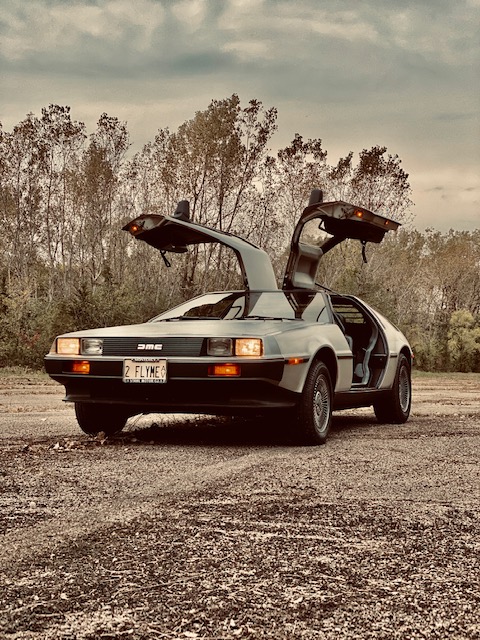
History of the 1981-1983 Delorean DMC-12
Conceived by John Z. DeLorean, engineered in part by Lotus, and styled by Giorgio Guigiaro, the DeLorean DMC-12 debuted in 1981. The car quickly piqued the interest of governments hither and yon, who were eager to attract the new car manufacturer and its jobs. The British government ultimately lured the DeLorean Motor Company to Northern Ireland, and a manufacturing facility was established in suburban Belfast.
The public eagerly awaited the vehicle’s 1981 launch, as the car had a rear-mounted engine set-up, gullwing doors, an angular form, and a novel stainless steel finish to accompany its who’s-who pedigree. The car came fully loaded, with the only choice for the buyer being the color of the leather seats (gray or black) and the type of transmission (automatic of a 5-speed manual).
The execution of the idea missed the mark, however. Instead of being sporty, the DMC-12 was equipped with a sluggish Peugeot-Renault-Volvo V6 that produced 130 hp. The car’s build quality was also reputedly poor upon launch, and the sticker price was a substantial $36,000. All of these factors and more conspired to suppress sales.
Production slowly continued into 1982 until the company went bankrupt (some cars were later assembled in 1983 and title accordingly). John DeLorean desperately tried to secure funding to rescue production, and became involved in a large-scale FBI cocaine bust. The arraignment effectively destroyed any hope of reviving the company and the DMC-12.
DeLorean Motor Company was founded in 1973 by John Z. DeLorean, a former GM engineer and executive who was best known as the father of the Pontiac GTO. Delorean had grown tired of the GM corporate environment and decided to build his own car: A high-tech, mid-engine sports car with a compact rotary power plant and revolutionary ERM composite chassis. Unfortunately, Mr. DeLorean hit some stumbling blocks along the way. ERM technology was deemed unsuitable for a car chassis only after he’d purchased the rights to the process. The Wankel rotary engine he chose had gone out of production. The car received several costly redesigns and was delayed by years. But DeLorean persevered and the DMC-12 finally debuted in 1981. By then, it sported a Lotus-designed backbone chassis, rear-mounted PRV (Peugeot, Renault, Volvo) V6, and a stainless steel clad Giugiaro-styled body with signature gullwing doors. Over a span of barely 3 years, just 8,583 cars left the North Ireland factory. Infamous scandals and labor problems killed the DeLorean, yet the DMC-12 became an icon, its squat and aggressive styling was immortalized as the time machine in the Back to the Future trilogy and there is quite simply, nothing else like it on the road today.
